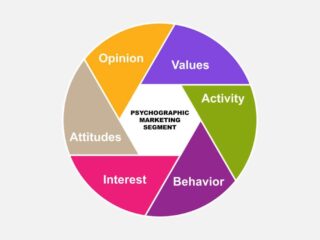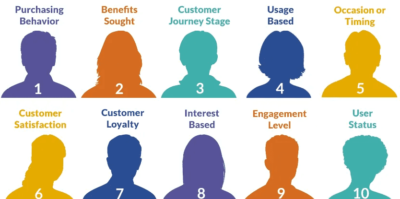According to a research study, 77% of B2B sales and marketing professionals are certain that personalized marketing can significantly enhance customer relationship.
So, how do you best achieve personalization in your B2B marketing? The answer is through Segmentation.
The term ‘segmentation’ encompasses a wide range of techniques and approaches. When we talk about segmentation, we usually mean a thorough statistical study of numerical data sets. However, not all segmentations are created through quantitative data analysis. There is another type of segmentation which is buyer personas based on the interpretation of qualitative data, such as an exhaustive interview with the customer.
Segmentation aids in the identification and precise targeting of customers. It may enable you to reach them more effectively than your competitors. If you don’t segment your market, you run the risk of treating everyone the same. And as the saying goes: “Reaching out to everyone is like reaching out to no one.”
MailChimp claims that segmented campaigns have an open rate of 14% and clicks about 101% more than those which are not segmented.
7 Ways to Perform B2B Market Segmentation
1. Based on firmographics
Simply put, firmographics are a set of organizational traits that are used to better understand and segment businesses.
Industry, company size, and location are all common firmographics. Firmographic data is simple to obtain and inexpensive, making it one of the most widely-used approaches. A significant benefit with firmographics is that they do not change frequently, thus keeping most of your data healthy.
2. Based on decision-maker
Some businesses segment their target market based on a person rather than the company. The outcome: Customer personas based on qualitative research.
Since you communicate with individuals and not with companies, sales and marketing tools tend to focus on data at the individual level. When you consider the people you communicate with, it should be easy to create resonant messaging.
3. Based on market potential
Also termed as Tier-based segmentation, it considers the lead’s potential worth. This can be accomplished by determining customer lifetime value average, channel of acquisition (different channels might have different cost per lead or lifetime value), the quality of the lead assessed after lead scoring.
This method makes allocating resources to the most profitable leads simple, taking account-based marketing and applying it to all the accounts in the same way.
4. Based on psychographics

Source: Formplus
This strategy categorizes clients into distinct sorts based on what they require from a product or service. It is more subjective than firmographics because it is based on wants and attitudes.
It’s an excellent strategy because it helps you to concentrate on your purchasing motivations. Reaching out to folks who have comparable problems is always easier.
Now consider this: You can more readily design campaigns for ‘productivity oriented’ or ‘budget conscious’ people than you can for all ‘small enterprises.’
5. Based on behavior

Source: Pointillist
Customers can be segmented based on their behavior. Since, the prospects come to you through a variety of sources, having interactions with content and the technologies they utilize (competitors or complimentary), and their reactions to your goods or solutions; all of this can provide valuable insights with respect to behavioral segmentation.
Behavioral segments provide clear insights into what your consumers want. Such insights can be supplemented with firmographic data gleaned from website analytics, CRM data, or firsthand investigation. This marketing strategy is therefore determined by a combination of who the prospect is, what they desire, and how they act.
6. Based on sophistication
This segmentation method divides businesses based on their business maturity and expertise. This grouping strategy, like most of the others, allows you to easily tailor needs-based marketing.
However, it recognizes that not all businesses will be affected by the situation or be aware of it. A CRM is probably unnecessary for a startup in its early stages until its customer base grows.
7. Based on technographics
Technographic data helps you to categorize, specify, customize, and prioritize your prospects based on how they use technology. It enables your sales and marketing teams to convert more customers by focusing their efforts in the correct places.
Information is split into consumer profiles based on an organization’s behavior and actions in relation to technology. These profiles are then combined based on a variety of criteria, variables, and traits that determine present and future needs as well as ongoing priorities.
You may also learn more about your prospects using technographics like budget, investment, etc., which can help you with your B2B sales and marketing efforts.
Tie the beads together for success
B2B marketing segmentation can be conducted in any of the seven ways we have discussed. There may be other ways of segmenting B2B market as well, based on jobs, needs, or any other attributes. The important thing to note is that you can leverage B2B segmentation only when multiple strategies are applied in combination. An interesting fact about these methods is that the limitation of one kind of segmentation is overcome by another and so on. For example, the limitation of firmographics is overcome by psychographics. And that of psychographics by behavior based segmenting. Therefore, ensure that all of your processes right from onboarding to email marketing campaigns, and CRM data fields, every endeavor, incorporates segmentation.


